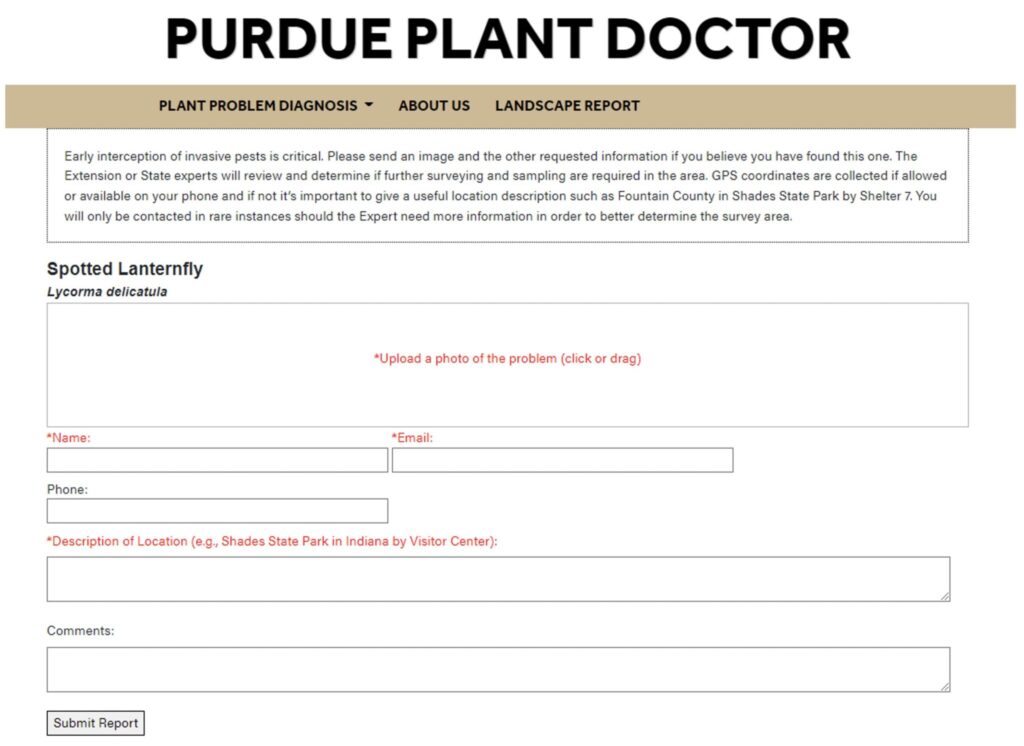All plants can fall victim to insects, diseases, and environmental problems. How they respond to this stress is often the same: Wilting, yellowing, holes, rots, blight—it’s a long list! With so much overlap in symptoms, it can be quite a challenge for people to identify their plant health problems accurately, quickly, and inexpensively.
The Purdue Plant Doctor website (www.purdueplantdoctor.com) can help diagnose and manage the thousands of plant health problems (insect, disease, and other biotic or abiotic conditions) on over 250 species of the most common Midwest landscape plants. Just like the apps, the Purdue Plant Doctor website has thousands of color photos, and current recommendations to help homeowners, arborist or plant health care professional diagnose and manage the most common plant problems in the Midwest and Northeast US. More importantly, there is the ability to access the thousands of accurately identified and curated, high-resolution photos to help educate yourself or your clients regarding important plant health management decisions.
How to Make a Diagnosis The welcome page (Fig. 1) begins by allowing you to enter what you think may be the problem, allowing you to by-pass the menu based process of diagnosis. If the plant name is entered into the text box, the app will provide a list of the most common problems affecting that host (Fig 2). Scrolling down through the list will take the user directly to the topic of interest.
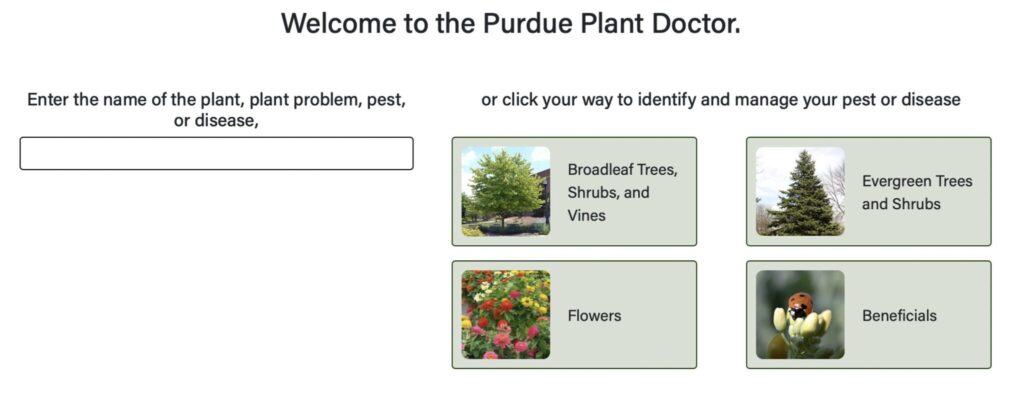
Figure 1. Welcome Page
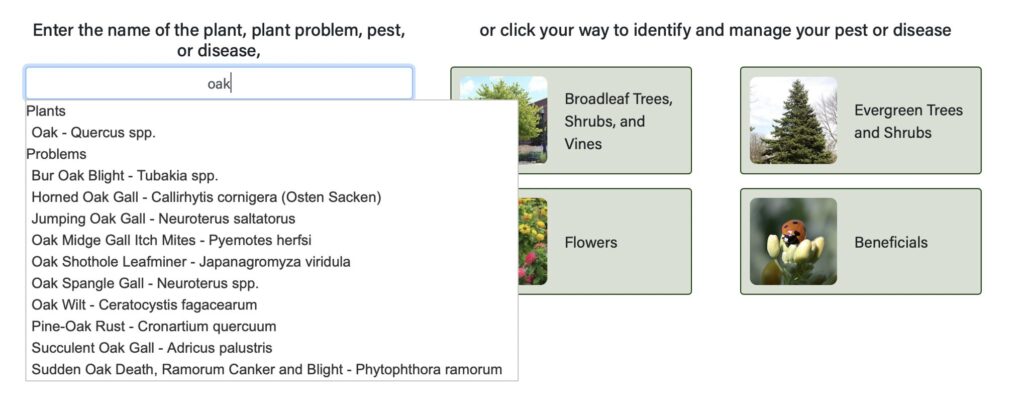
Figure 2. Entering the name of the host provides a shortcut to a list of potential problems specific to that host.
Alternatively, the user can click on the type of host plant (Broadleaf tree, shrub, vine; Evergreen tree and shrub; Flowers).
The next menu screen guides the practitioner through a visual menu of plant hosts, with a diagnostic thumbnail to assist them in correctly IDing the plant of interest. Each thumbnail can be clicked to obtain a higher resolution image to aid in identifying the host plant.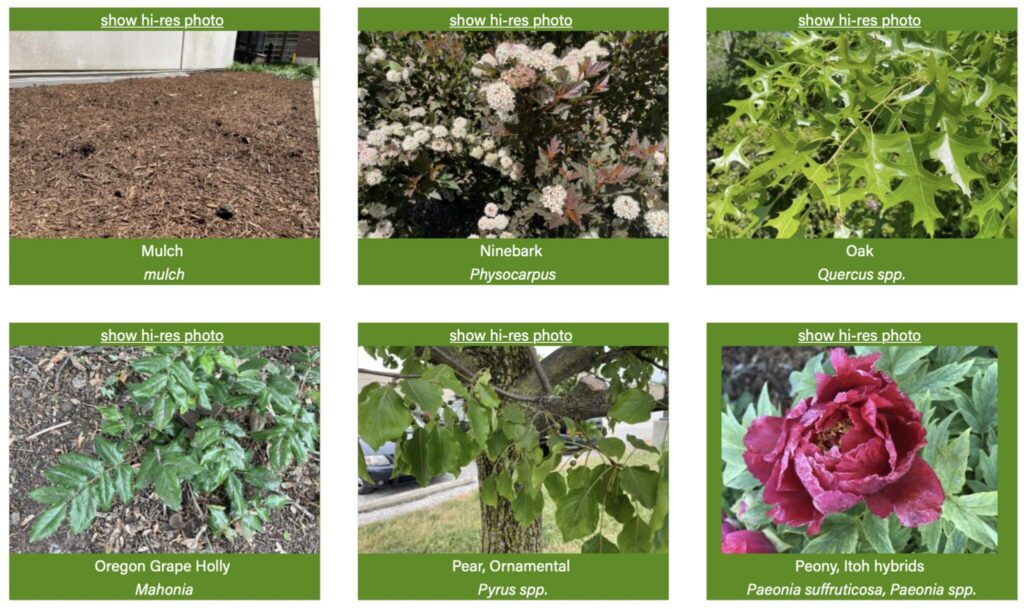
Selecting the host prompts the user to identify the area of concern (e.g., leaves, flowers, branches, etc.). 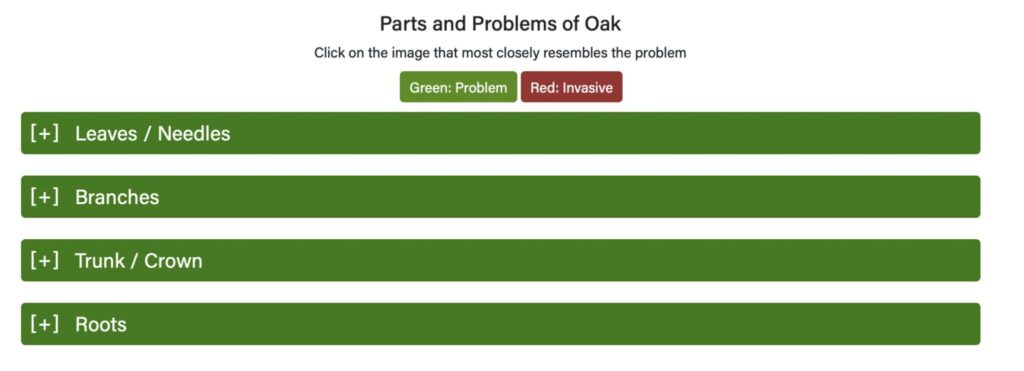
Choosing a location where the problem is observed opens up a menu of additional thumbnails the user can examine to locate a similar looking problem. The app then pulls from the library a selection of photos revealing signs and symptoms commonly seen on the selected tree and orders the problems from most common to least common. From here, just click on the image that best matches the pest problem of interest.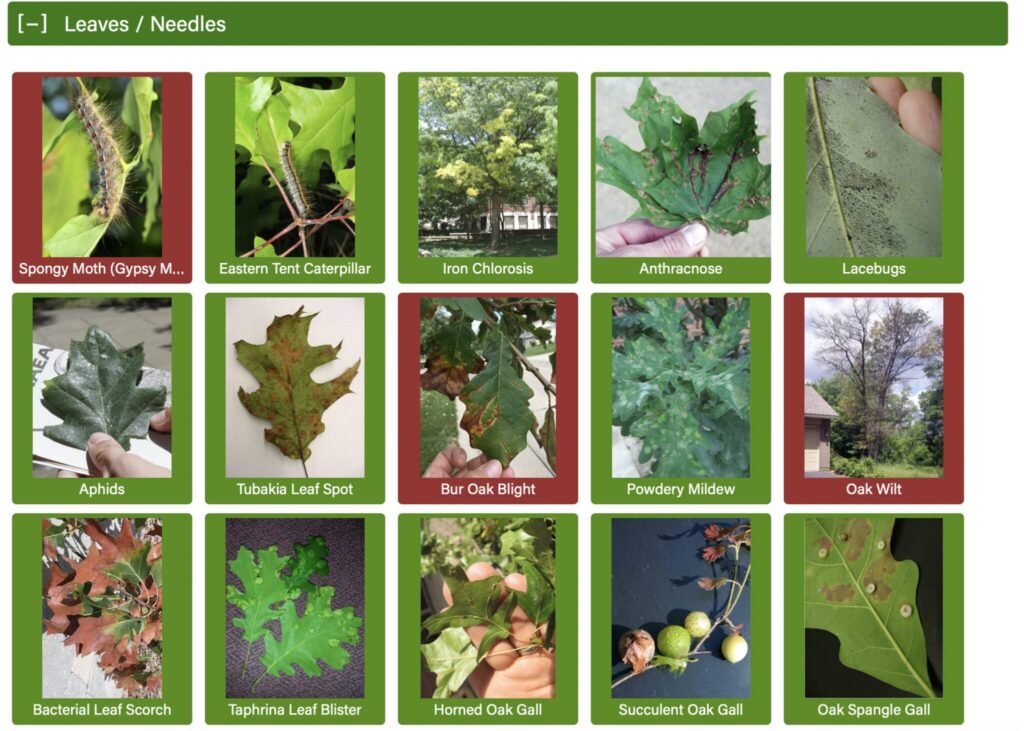
Clicking on any option reveals an additional screen with more information and images. This information can be easily downloaded, shared, or printed.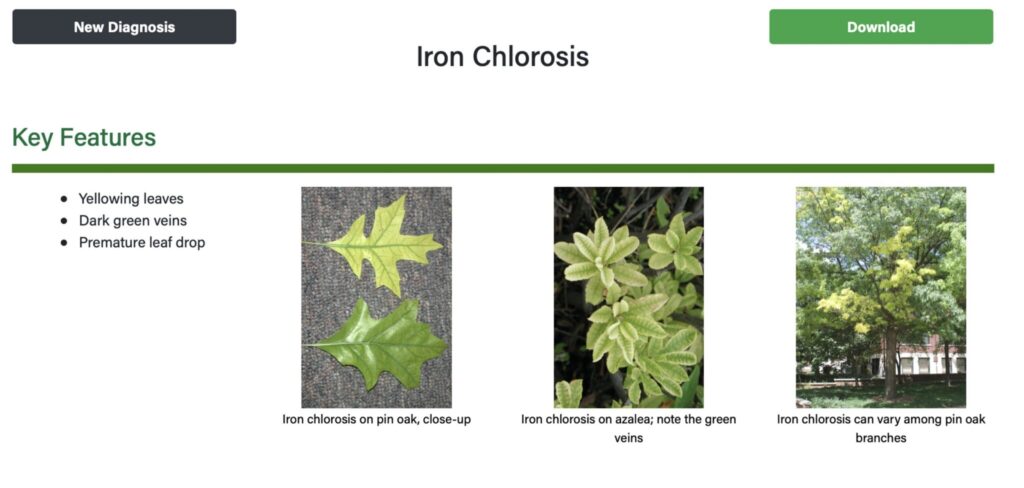
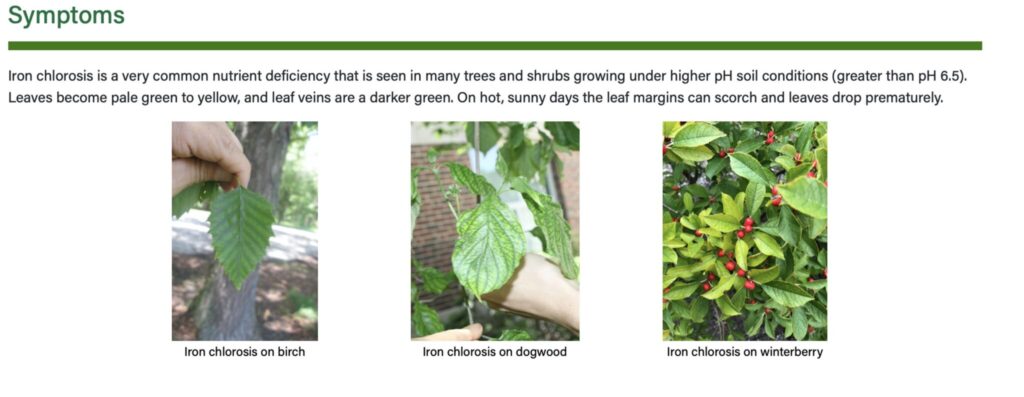

Compare Look-A-Likes. Many plant problems have a superficial resemblance to each other. For this reason, many of our plant problem entries provide a list of Look-A-Likes that you can compare to help confirm your diagnosis. Clicking on the Look-A-Like button allows you to compare images and key features of similar pests. For example, iron chlorosis is often confused for manganese deficiency.
Finding information on a particular kind of plant problem. If you already know the cause of the plant problem, you can simply type the name of the problem in the welcome screen. By default, the website gives you information about problems on trees and shrubs. If you want management information for a known flower problem, you need to select appropriately. For example, Japanese beetles occur on trees and shrubs as well as flowers. The default Japanese beetle entry will tell you how to manage this problem on trees and shrubs. The Japanese beetle entry that specifies (Flowers- annuals and perennials) will give you suggestions for managing this pest in your flower bed.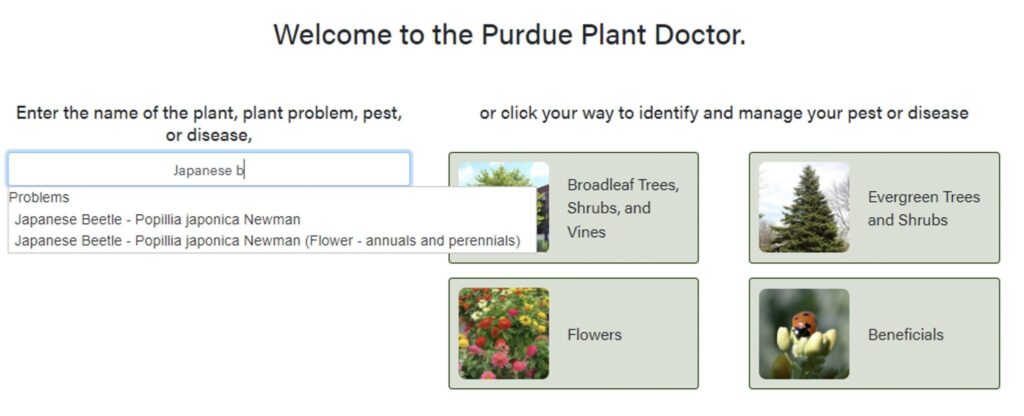
Getting Information on Beneficials. Not all insects are pests. By choosing the “Beneficials” icon on the welcome screen you can identify the kind of beneficial insect you may have from a gallery of beneficial insects.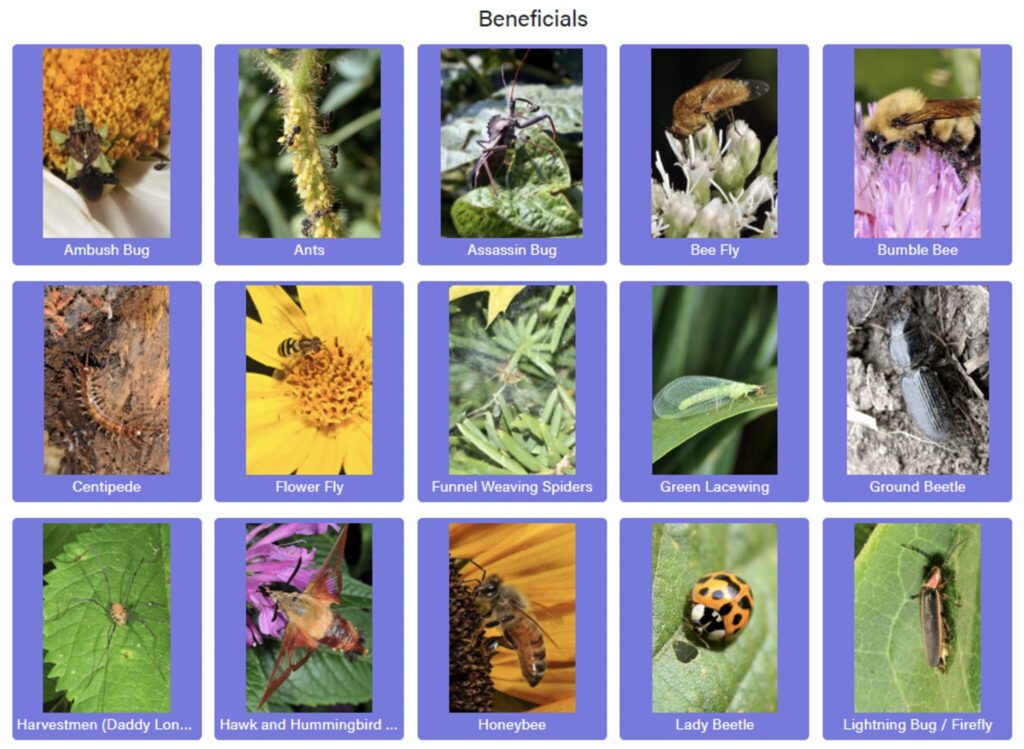
How to Share Information. The Plant Doctor website was designed to have all of its critical information and photos in a mobile friendly format so it can be freely accessed, downloaded and shared via text, email, or even on social media platforms.
How to Report Invasives. Some of the pests you are likely to encounter may be newly introduced invasive pests that are not yet widely distributed. Examples include spotted lanternfly, Asian longhorned beetle and boxwood blight. Knowing their distribution can help us provide you with better management recommendations. The Plant Doctor Website can help you report the occurrence of invasive pests to State authorities. By Clicking on the Report this pest button, you can upload a photo of an invasive and submit it directly to the authorities.
